Bursting Bubbles and Building Bridges:
Tracking the Global Climate Change Narrative
Team Members
Alberto Abellán, Francesca Arcostanzo, Tobias Bürger, Paolo Gerbaudo, Frederik De Grove, Jonas Kaiser, Saskia Kok, Maya Livio, Sarah Oates
Introduction
This research seeks to examine climate change narratives in social media, particularly whether narratives surrounding fossil fuel phase-out have taken hold in Twitter and Facebook discourse. Our research was informed by a brief from climate action stakeholders, in which the stakeholders identified the meta-narratives developed and disseminated as part of their communications strategy. These stakeholders then defined their research needs, which included an analysis into whether these narratives have successfully made their way into social media sites, and if so, whether they were primarily shared by actors within the climage change "bubble," or whether some actors were migrating the coversation outside of the bubble into the broader public sphere. Here, the "bubble" was defined as the official social media accounts of climate change-related organizations, as well as the personal accounts of the employees of said organizations.
Research Questions
- Have the meta-narratives disseminated by climate action network stakeholders, particularly those about the fossil fuel phase-out, gained traction in the overall discourse surrounding two major climate-related events: the Lima COP20 and Peoples Climate March.
- Which meta-narratives have resonated, and with which actors? Are those actors from within the bubble of committed environmental organizations, or has the key metanarratives moved beyond the bubble?
- If so, who are the key "bridge" actors responsible from moving the meta-narratives from inside to outside the bubble?
Methodology
This study sought to address the research questions through both a top-down and bottom-up approach. Employing mixed methods enabled us to harness both the affordances of content analysis and the powerful interpretive visualizations of web analytic tools. The employed timeframe was 23 November 2014 - 19 December 2014. The specific Twitter and Facebook methodology are discussed further below. Twitter Methodology:- Two Twitter datasets were used; COP20 and Globalwarming.
- The globalwarming dataset was filtered for #peoplesclimate.
- A co-hashtag analysis was performed on both datasets to identify shared and dominant discourses.
- The most engaging actors were searched in the conversation, and were consequently categorised according to their type (CSO.GOV/COM/etc).
- The tools that were used for analysis and visualization were Tcat, Gephi, Excel, and Illustrator.
- The most-engaged-with posts were derived from the complete Facebook dataset (20.000 posts).
- A qualitative content analysis was performed; e.g. analysis of various recurring themes.
- From the content analysis/list of words, themes and labels were created.
- The words were associated with the themes.
- All Facebook posts relating to COP20 were searched, regarding the total amount of user engagement, per day.
- The most relevant actors were identified, accordingly.
Findings: Twitter
There is a substantive difference between the Lima COP20 and Peoples Climate March narrative. When looking at the co-hashtag analysis of the Lima COP20 dataset, the centre is dominated by a political narrative mostly depicting the COP20 event, with some indicators pointing towards the COP21 taking place in Paris 2015. Several countries and regional organizations are clearly visible in the network. In contrast, the People's Climate March co-hashtag analysis points towards a network dominated by civic society. The hashtags within the network are mostly connected to societal issues (including poverty and occupy wallstreet), with the People's Climate March functioning as an overall meta-narrative. Furthermore, there is a lack of science in both datasets as shown by the limited amount (re-tweets) of scientific work (articles, research, etc). There is also a relatively large amount of users engaging in both events (10.000 overlap). In short, the findings point towards a climate change narrative taking place mostly within 'the bubble'.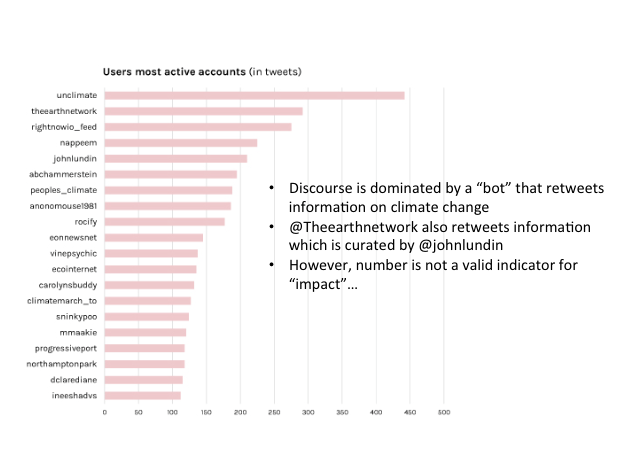
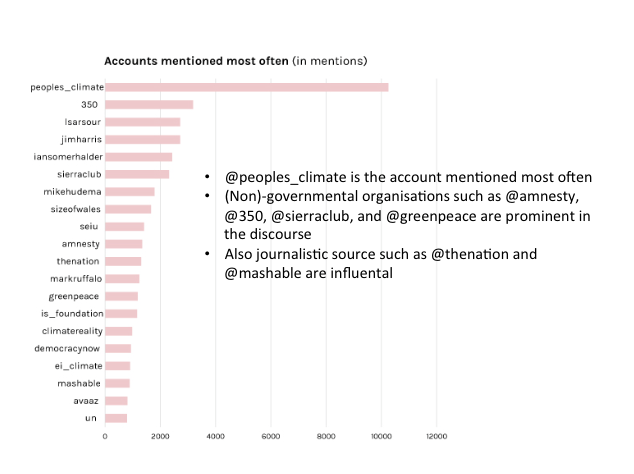
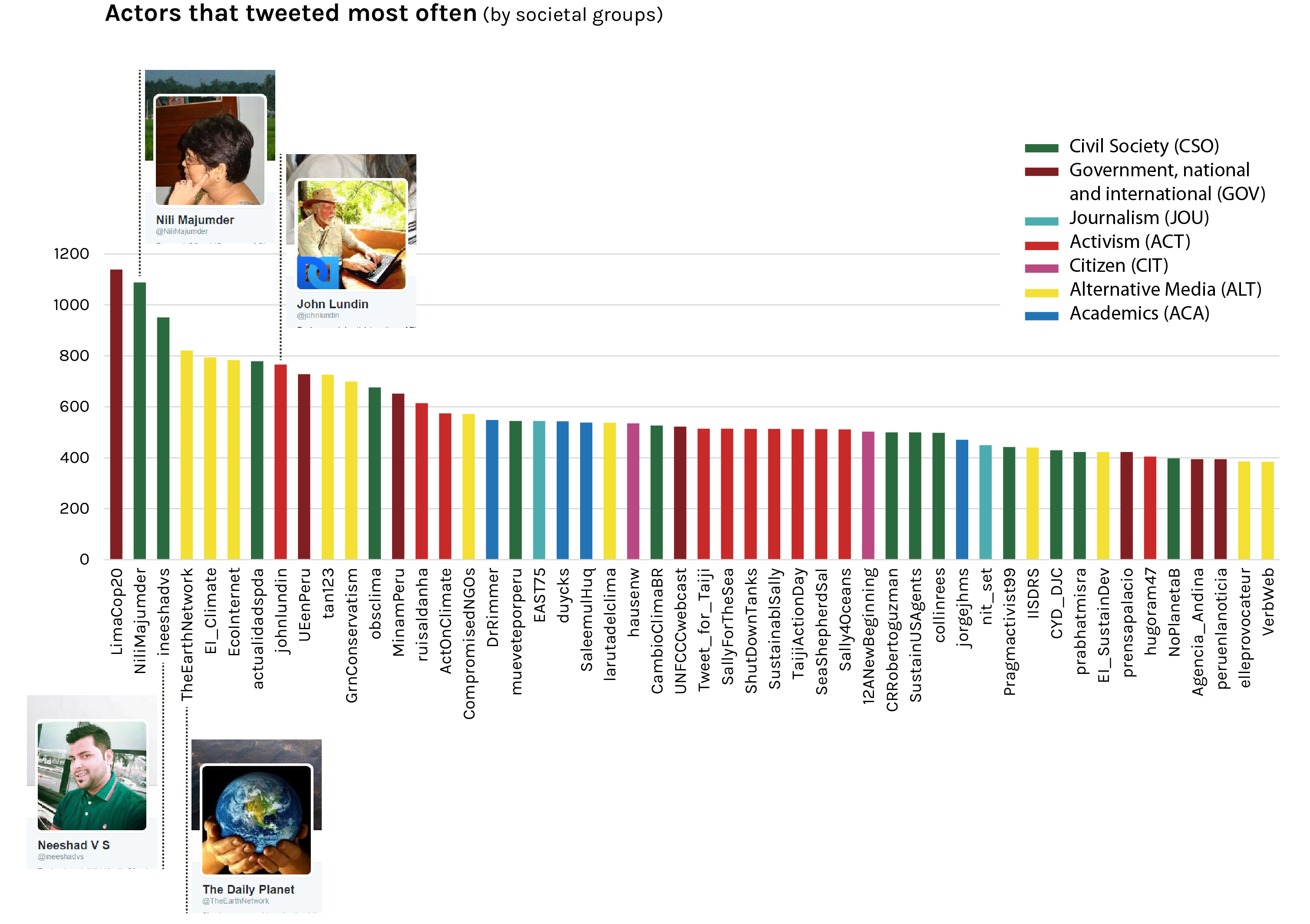
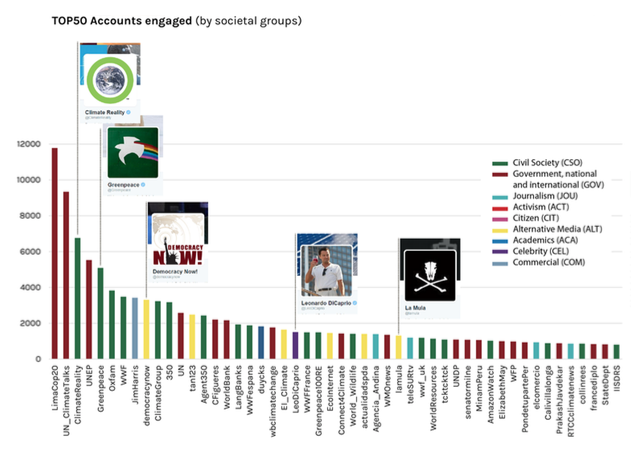
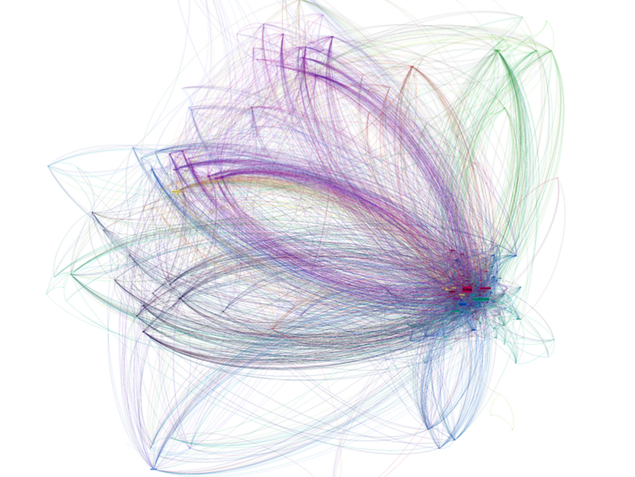
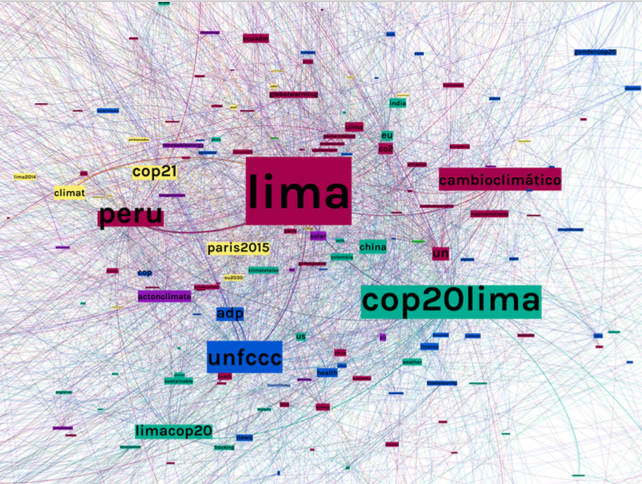
Globalwarming data, filtered by #peoplesclimate (co-hashtag analysis)
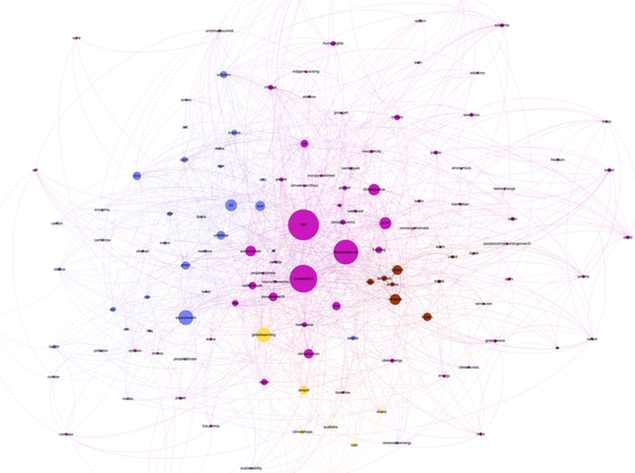
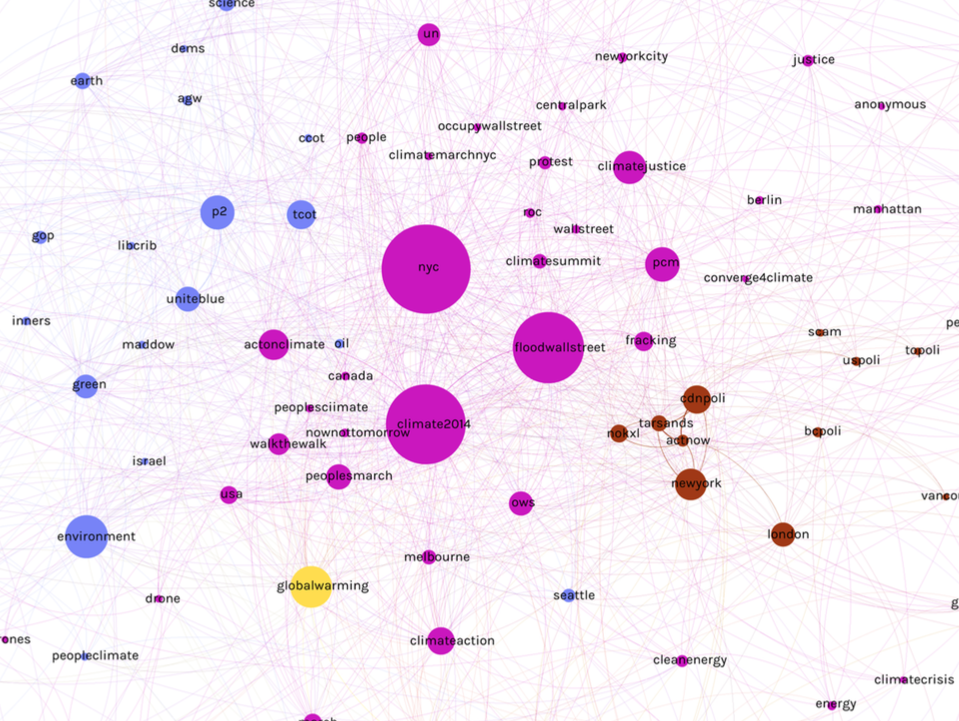
Findings: Facebook
The most engaged with content on Facebook is mostly generated by celebrities, such as Emma Watson receiving an engagement of 7557 (total number of likes, comments and shares) on 2 December 2014. Furthermore, on 27 November 2014 Greenpeace International posted a message surrounding Colin Butler's arrest and release from custody after a peaceful protest against Whitehave Coal's mine in the Leard state Forest, receiving an engagement of 5016. The content analysis result show that most posts can be labeled as 'action, 'venue', 'global community', 'economics', and 'COP20 Event' - where the latter two labels resonate with the Twitter co-hashtag analysis results. In short, despite the prevelence of a climate change [COP20] narrative on Facebook, more meaningful and nuanced messages appear to get lost.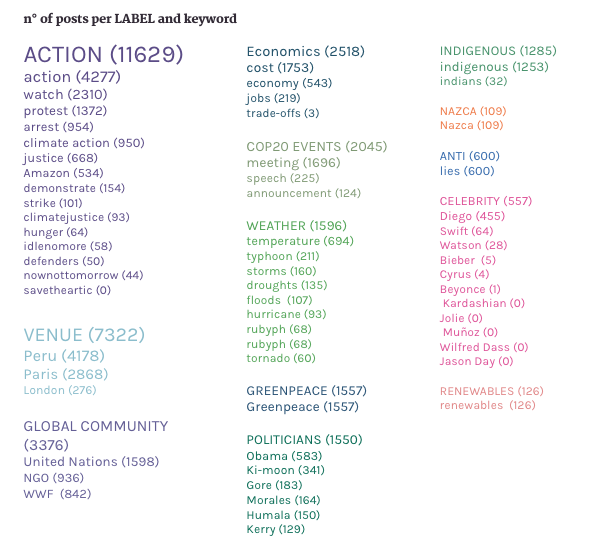
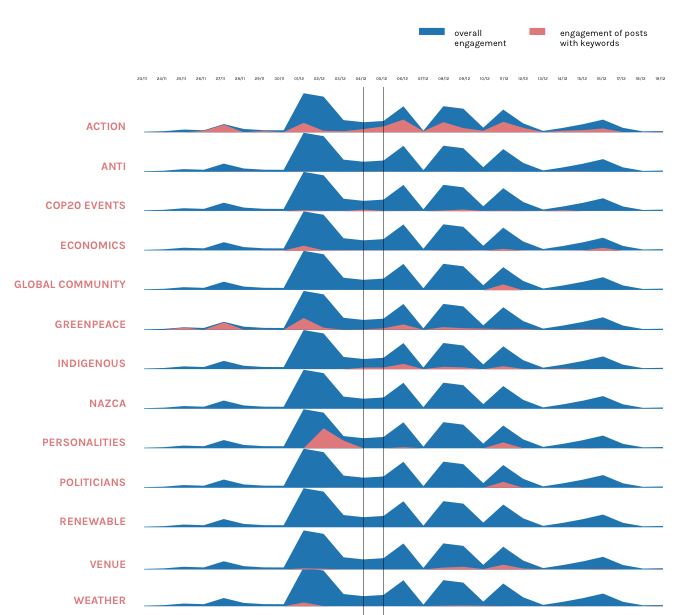
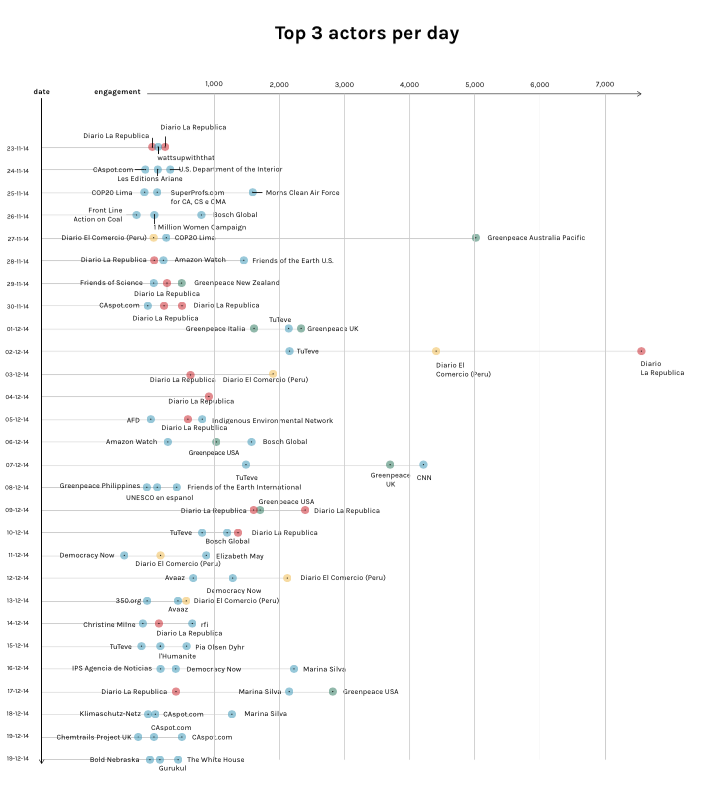
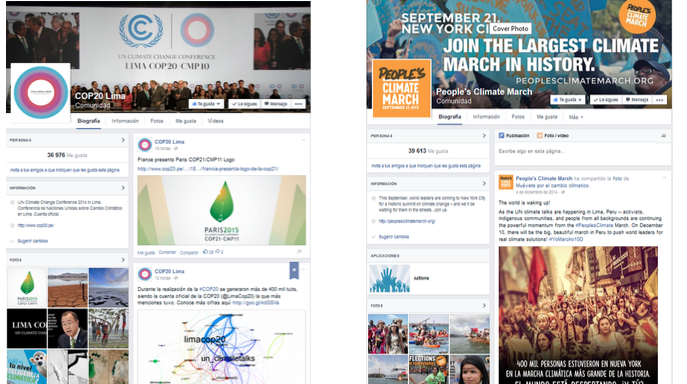
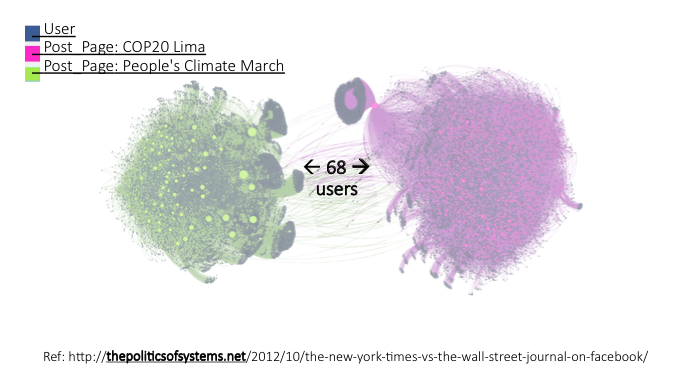
Conclusions
This study has examined the overall narrative of the climate change debate surrounding COP20 and the People's Climate March event, by identifying the most active users as well as the most engaged with content on Facebook and Twitter, for the period of 23 November 2014 to 19 December 2014. The findings point towards a 'bubbled' climate change narrative, where celebrities and media capitalize most of the engagement. The results therefore indicate that platform specific properties need to be taken into account, as well as the consideration of alternative platforms. Copyright © by the contributing authors. All material on this collaboration platform is the property of the contributing authors.
Copyright © by the contributing authors. All material on this collaboration platform is the property of the contributing authors. Ideas, requests, problems regarding Foswiki? Send feedback


